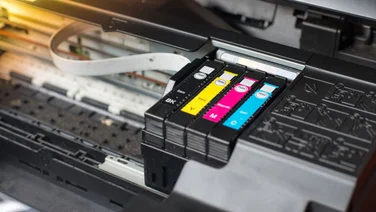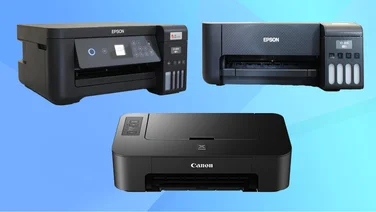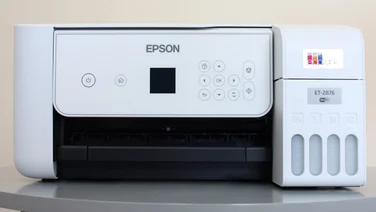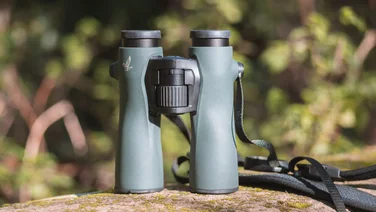To help us provide you with free impartial advice, we may earn a commission if you buy through links on our site. Learn more














- Has Wi-Fi and NFC
- High resolution rear display
- Image quality not as high as rivals
If you’ve found this page, there’s a good chances you’re thinking about buying your first DSLR. Canon has long been a household name in photography, and although the 1300D is a suitable camera to learn the principles of photography, it isn’t the best entry-level DSLR you can buy.
It’s responsive and easy to use and Canon has added some handy new features like WI-Fi (for transferring images to your phone or tablet without cables) but sadly it simply comes up short in terms of image quality compared to Nikon’s entry-level models, which have been equipped with higher resolution, 24-megapixel sensors ever since 2012’s Nikon D3200.
READ NEXT: Best DSLRs
Canon EOS 1300D Review: Price and competition
The Canon EOS 1300D has only come down in price a little since its release two years ago. You can buy its body for £260 or get it with the kit lens for £295. The biggest competition still comes in the form of the Nikon D3400, which captures much higher quality images and video, and also offers a larger viewfinder and faster continuous shooting. The Nikon is now only a smidge more expensive at around £325 for the body only or £350 with a kit lens.
If you’re set on buying a Canon but have decided the 1300D doesn’t offer what you’re looking for, the more expensive Canon EOS 200D is solid performer. It’ll cost you £440 for body only, or £485 with an 18-55m kit lens, but offers a significant boost in image and video quality, along with an articulated touchscreen, faster burst rate and better battery life.
Canon EOS 1300D Review: Features
The one big thing that’s included with the 1300D that you didn’t get with the 1200D that this camera replaces is Wi-Fi. It’s a feature I increasingly rely on when I want to share photos via a phone or tablet. It’s much more convenient than having to grapple with a card reader on a PC or laptop and it’s very welcome here.
The Canon EOS 1300D’s Wi-Fi system uses NFC for easy connection with Android devices. The idea is you tap your phone to the left side of the camera and the two devices are instantly paired. In practice, it isn’t quite that simple, but after a few goes at it I managed to establish a connection. The companion app, which supports both iOS and Android devices includes remote shooting, image file transfers and GPS tagging. I found that remote shooting was a little on the unresponsive side, both to update the remote viewfinder and to respond to input, but it did the job. I like the ability to star-rate photos on a tablet, giving you something useful to do during long journeys home, but video isn’t supported over Wi-Fi, either for transfers or remote shooting.

Another upgrade here is the in the display department. The Canon 1300D’s 3in display resolution is up from 460,000 on the 1200D to 920,000 dots here, which is welcome, but I was never troubled by the resolution of the 1200D anyway. I’d have preferred it if Canon had upgraded the size of the optical viewfinder instead. Its 0.8x magnification (equivalent to 0.5x on a full-frame camera) is one of the smallest on the market and isn’t as rewarding to use as the larger optical and electronic viewfinders offered on other camera models. The Nikon D3400’s viewfinder, for instance, has a magnification of 0.85x.
Canon EOS 1300D Review: Controls and performance
The controls have been tried and tested on many EOS cameras and on the whole they’re well designed. There are quite a few labelled buttons, and while the labels might not be familiar to newcomers, I always prefer a camera that encourages people to learn the ropes rather than hide useful features out of sight. One of the exceptions to this rule is that Manual white balance is much harder to access than it should be. Hitting the WB button brings up various white balance presets but calibrating it using a white or grey subject involves jumping through lots of hoops.

Tapping the Q button reveals various functions on the screen, which can be navigated using the four-way pad and adjusted using the command dial. However, when making adjustments via the main menu or the labelled buttons, settings must be saved by hitting OK. Adjusting a setting and then pressing the shutter button means the adjustment is discarded. I was often caught out by this and can’t think of any reason for it. The EOS 1200D did the same thing.
Otherwise, it’s responsive and straightforward to use, with nippy autofocus contributing to a shot every 0.4 seconds in normal use. However, it’s worth noting that Canon sent me its 18-55mm STM lens for testing, whereas the 1300D is normally sold with the 18-55mm IS II lens, which may behave differently.

Setting the flash to full power, it managed a shot every 2.7 seconds — an excellent result. Continuous shooting trundled along at 3fps, which is the slowest I’ve seen for a while. Shooting in RAW mode, it slowed to 0.8fps after six frames. This isn’t a camera for wildlife or sports photography.
Videos are recorded at 1080p resolution, but while the big sensor should deliver excellent quality, it isn’t as simple as that. The algorithm used to resize the sensor’s 18-megapixel output down to 2-megapixel (1080p) video frames produces slightly coarse details and is prone to moiré interference. Autofocus is locked during recording by default, and enabling continuous autofocus for videos results in clumsy adjustments. Videos stop recording without any after about 12 minutes, once the video file reaches a 4GB limit.
Canon EOS 1300D review: Image quality
The camera fared much better in image quality tests, but comparisons with rival cameras didn’t show the EOS 1300D in a particularly good light. Noise levels at fast ISO speeds were disappointing, with multi-coloured blotches taking their toll on darker parts of photos at ISO 3200 and above. Comparing my studio test scene with other EOS cameras in recent years, JPEG quality was broadly on a par with the EOS 600D but noise was more pronounced than from the EOS 650D and later models. I suspect this is down to the 1300D’s use of an older Digic 4+ processor, which limits the camera to a less sophisticated noise reduction algorithm than the Digic 5-equipped 650D. It also exhibited more noise than Nikon’s entry-level SLR, the D3300.
Use of the older Digic 4+ processor also means that chromatic aberrations aren’t corrected automatically for JPEGs. This is a phenomenon whereby the red, green and blue components of the image don’t align perfectly towards the edges of the frame, giving slightly soft details and halos of discoloration and high-contrast lines. It wasn’t particularly noticeable in my test shots but I’d prefer not to see it at all.

^ There’s plenty of detail in the centre of this wide-angle shot but the edges show some sign of chromatic aberrations when viewed up close. (1/200s, f/9, ISO 100, 29mm equivalent)

^ The long end of the kit lens’s zoom range is better but details aren’t quite pixel sharp. (1/200s, f/8, ISO 100, 88mm equivalent)

^ It’s harder to fault this macro shot. Focus is sharp and the blossom is perfectly exposed against the dark background. (1/100s, f/5.6, ISO 160, 88mm equivalent)

^ These backlit trees reveal the extent of the chromatic aberration problem, with strips of red and green down the sides of branches in the corners of the frame. (1/100s, f/5.6, ISO 100, +1.3 EV, 29mm equivalent)

^ Another nicely exposed shot, but the 1300D isn’t smart enough to raise the shutter speed automatically to avoid motion blur in moving subjects. (1/80s, f/5.6, ISO 125, 80mm equivalent)

^ Image quality holds together well indoors at ISO 800, with warm, flattering skin tones. There’s plenty of definition to fine details but the out-of-focus background is a little grainy. (1/60s, f/5.6, ISO 800, 80mm equivalent)

^ Setting the shutter speed manually to 1/320s freezes motion but also pushes noise levels up. It’s not a bad result but noise is rampant, especially in darker parts of the frame. (1/320s, f/5.6, ISO 4000, 88mm equivalent)
Canon EOS 1300D review: Verdict
Not everyone needs an all-singing and -dancing camera, and if the 1300D was straightforward and effective I’d happily give it a big thumbs up. However, there are a few traits that are actively frustrating. With the Canon EOS 750D currently available for around £450, it’s worth paying the extra for its articulated touchscreen, superior autofocus for both photos and video, faster continuous performance, larger viewfinder and various other upgrades.
Meanwhile, those on tighter budgets are better served by the Nikon D3300, which is still available, a more dependable camera and is currently available for around £300 with its kit lens. As with the 1200D before it, the Canon 1300D fails to rise above its rivals and siblings.









